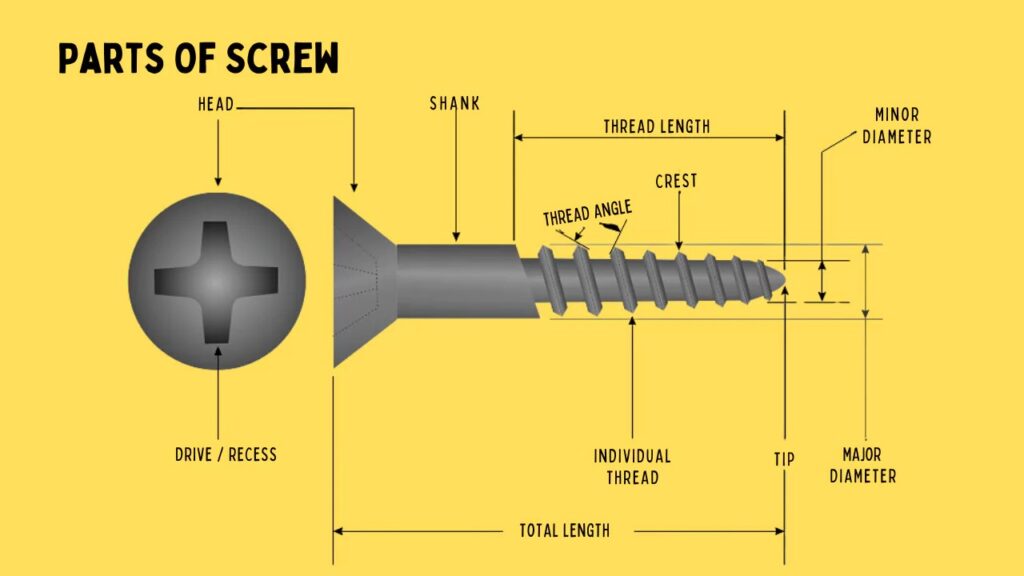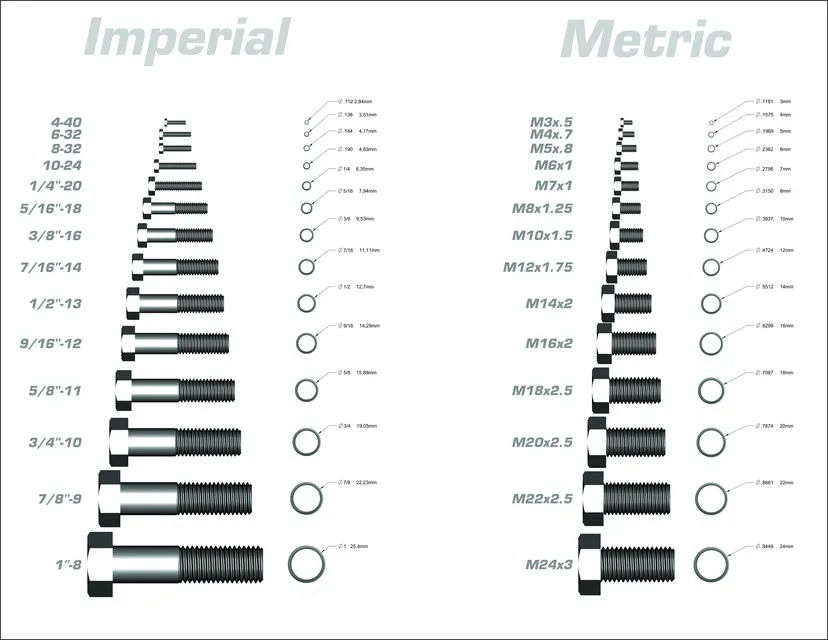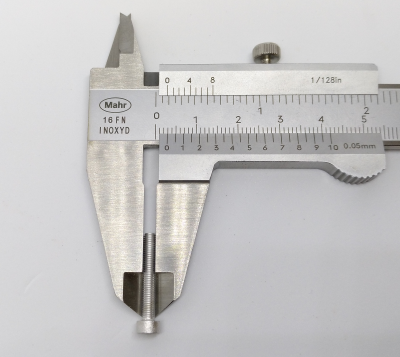Screws might seem like small, simple components, but picking the wrong size can turn a dream project into a nightmare. Whether you’re assembling a bookshelf, constructing a house, or repairing a machine, the right screw size ensures strength, stability, and a perfect fit. But what do those numbers, letters, and measurements mean? And how do you choose the right one?
In this screw size guide, we’ll unravel the mystery of screw sizes, covering everything from metric and imperial systems to practical tips for measuring and selecting the perfect screw. Along the way, we’ll highlight insights from Xiluo Mold, a leader in fastener mold technology with over 23 years of experience crafting precision molds for high-quality screws. By the end, you’ll be equipped to tackle any project with confidence—let’s get started!
What Are Screw Sizes?
Screw sizes are a standardized way to describe a screw’s key dimensions: its diameter, length, and thread pitch (or threads per inch, TPI). These measurements aren’t just technical jargon—they determine how a screw performs in your project.
- Diameter: The width of the screw’s shaft, which affects its strength and fit.
- Length: Measured from the tip to the top of the head (or the bottom of the head for countersunk screws), this dictates how deep the screw can penetrate.
- Thread Pitch/TPI: The spacing between threads (in millimeters for metric screws) or the number of threads per inch (for imperial screws), which influences grip and compatibility.
So, what do screw sizes mean? They’re a code that ensures the screw matches your materials, load requirements, and hardware. A mismatch can lead to stripped threads, loose joints, or even structural failure. Precision is key here, and companies like Xiluo Mold play a vital role by designing molds that produce screws with exact, consistent sizes for manufacturers worldwide.

Metric vs. Imperial Screw Sizes
Screws come in two primary systems: metric and imperial. Each has its own sizing conventions, uses, and regions of dominance. Let’s break them down.
Metric Screw Sizes
Metric screws use millimeters and are labeled with an “M” followed by the diameter (e.g., M8 = 8mm). The thread pitch is also in millimeters (e.g., M8-1.25 has a 1.25mm pitch).
- Common Sizes: M3, M4, M5, M6, M8, M10.
- Uses: Automotive, electronics, machinery, and international manufacturing.
- Advantages: Precise, globally standardized, and widely used outside the U.S.
- Example: An M6-1.0 screw is perfect for securing car parts or assembling metal frames.
Imperial Screw Sizes
Imperial screws, common in the U.S., use inches and a gauge system. The gauge number (e.g., #6, #8) indicates diameter, with larger numbers meaning wider screws. The TPI shows thread density (e.g., #8-32 has 32 threads per inch).
- Common Sizes: #4, #6, #8, #10, #12.
- Uses: Woodworking, construction, furniture, and general DIY.
- Advantages: Familiar to U.S.-based builders and readily available in hardware stores.
- Example: A #10-24 screw is ideal for heavy-duty woodworking or metal brackets.
Metric vs. Imperial: Which to Use?
- Location: Metric dominates globally; imperial rules in the U.S.
- Project: Check your hardware—nuts, bolts, or pre-drilled holes often dictate the system.
- Tools: Metric screws need metric tools (e.g., M4 wrench), while imperial uses SAE sizes.
Xiluo Mold’s precision molds cater to both systems, ensuring manufacturers can produce standard screw sizes that meet diverse needs worldwide.

How to Measure Screw Size
Need to replace a screw or double-check a size? Measuring it accurately is easier than you think. Here’s a beginner-friendly screw size guide to get it right.
Tools You’ll Need
- Ruler or Tape Measure: For basic length measurements.
- Caliper: For precise diameter and length readings.
- Thread Gauge: To measure thread pitch (metric) or TPI (imperial).
Step-by-Step Instructions
- Measure the Diameter:
- Use a caliper to measure the shaft’s width (not the head).
- For metric: Record in millimeters (e.g., 5mm = M5).
- For imperial: Match to a gauge chart (e.g., 0.164” ≈ #8).
- Measure the Length:
- Place the ruler from the tip to the head’s top.
- Note: For countersunk screws, measure from the top of the head to the tip.
- Determine Thread Pitch or TPI:
- Use a thread gauge to find the pitch (e.g., 1.0mm for metric) or count threads per inch (e.g., 32 TPI for imperial).
Quick Tips
- Double-check measurements—small errors can lead to big mismatches.
- If unsure, bring the screw to a hardware store for identification.
With these steps, you’ll master how to measure screw size like a pro. Xiluo Mold’s molds ensure every screw is crafted to precise dimensions, making identification and replacement seamless.

Common Screw Sizes and Their Uses
Screw sizes vary by project, material, and load. Here’s a rundown of common screw sizes and their practical applications.
Small Screws
- #4 (0.112”) or M3: Tiny but mighty.
- Uses: Electronics, eyeglass repair, small hinges.
- Example: Securing a circuit board or toy assembly.
- #6 (0.138”) or M3.5: A versatile middle ground.
- Uses: Light woodworking, cabinetry, plastic fixtures.
- Example: Assembling IKEA furniture or mounting wall brackets.
Medium Screws
- #8 (0.164”) or M4: A DIY favorite.
- Uses: Furniture frames, shelving, light decking.
- Example: Building a bookshelf or attaching drywall.
- #10 (0.190”) or M5: Strong and reliable.
- Uses: Heavy woodworking, construction, automotive.
- Example: Fastening joists or securing engine parts.
Large Screws
- #12 (0.216”) or M6: Built for toughness.
- Uses: Structural framing, outdoor projects, machinery.
- Example: Constructing a pergola or mounting heavy equipment.
Real-World Scenarios
- Woodworking: Use #8 screws for softwoods like pine, #10 for hardwoods like oak.
- Construction: #10 or #12 screws ensure stability in load-bearing beams.
- Electronics: M3 or #4 screws keep delicate components secure without overpowering them.
Xiluo Mold’s expertise in precision molds guarantees these common screw sizes for construction, woodworking, and beyond are produced with consistency and quality.

Screw Size Chart
A screw size chart is your cheat sheet for quick reference.
Metric Screw Sizes
| Size | Diameter (mm) | Thread Pitch (mm) |
| M3 | 3 | 0.5 |
| M4 | 4 | 0.7 |
| M5 | 5 | 0.8 |
| M6 | 6 | 1.0 |
| M8 | 8 | 1.25 |
Imperial Screw Sizes
| Size | Diameter (in) | Threads per Inch (TPI) |
| #4 | 0.112” | 40 |
| #6 | 0.138” | 32 |
| #8 | 0.164” | 32 |
| #10 | 0.190” | 24 |
| #12 | 0.216” | 24 |
How to Read a Screw Size Chart
- Metric: “M5-0.8” means 5mm diameter, 0.8mm thread pitch.
- Imperial: “#8-32” means gauge #8 (0.164” diameter), 32 TPI.
This chart simplifies how to read a screw size chart, helping you match screws to your project fast. For a full version, check out Xiluo Mold’s resources!
Tips for Choosing the Right Screw Size
Selecting the right screw size goes beyond measurements—it’s about performance and practicality. Here are expert tips to guide you:
- Match the Material:
- Softwoods (pine): #6 or #8 screws.
- Hardwoods (oak): #10 or larger.
- Metal: Match diameter to pre-drilled holes (e.g., M5 for 5mm holes).
- Consider the Load:
- Light loads (e.g., picture frames): #4 or M3.
- Heavy loads (e.g., beams): #12 or M8+.
- Account for Environment:
- Indoors: Standard steel screws work fine.
- Outdoors: Use corrosion-resistant options (e.g., stainless steel) in appropriate sizes.
- Check Compatibility:
- Ensure screw diameter fits pre-drilled holes or nuts to avoid splitting or wobbling.
- Match thread pitch/TPI to tapped holes for a secure hold.
- Test Before Committing:
- Pilot test a screw in scrap material to confirm fit and strength.
Xiluo Mold’s precision molds ensure every screw size—across types of screw sizes—meets exact standards, giving you confidence in every twist.
Conclusion
Mastering screw sizes is a game-changer for any project. From decoding metric vs. imperial screw sizes to measuring and choosing the right fit, you’re now armed with the knowledge to build smarter and stronger. Whether it’s a small DIY fix or a large-scale construction job, the right standard screw sizes make all the difference.
At Xiluo Mold, we’ve spent over two decades perfecting the molds that produce these critical fasteners. Our commitment to precision ensures manufacturers deliver screws you can rely on. Need custom sizes or expert advice? Reach out to us at sunny@xiluomold.com—we’re here to support your next big idea!
